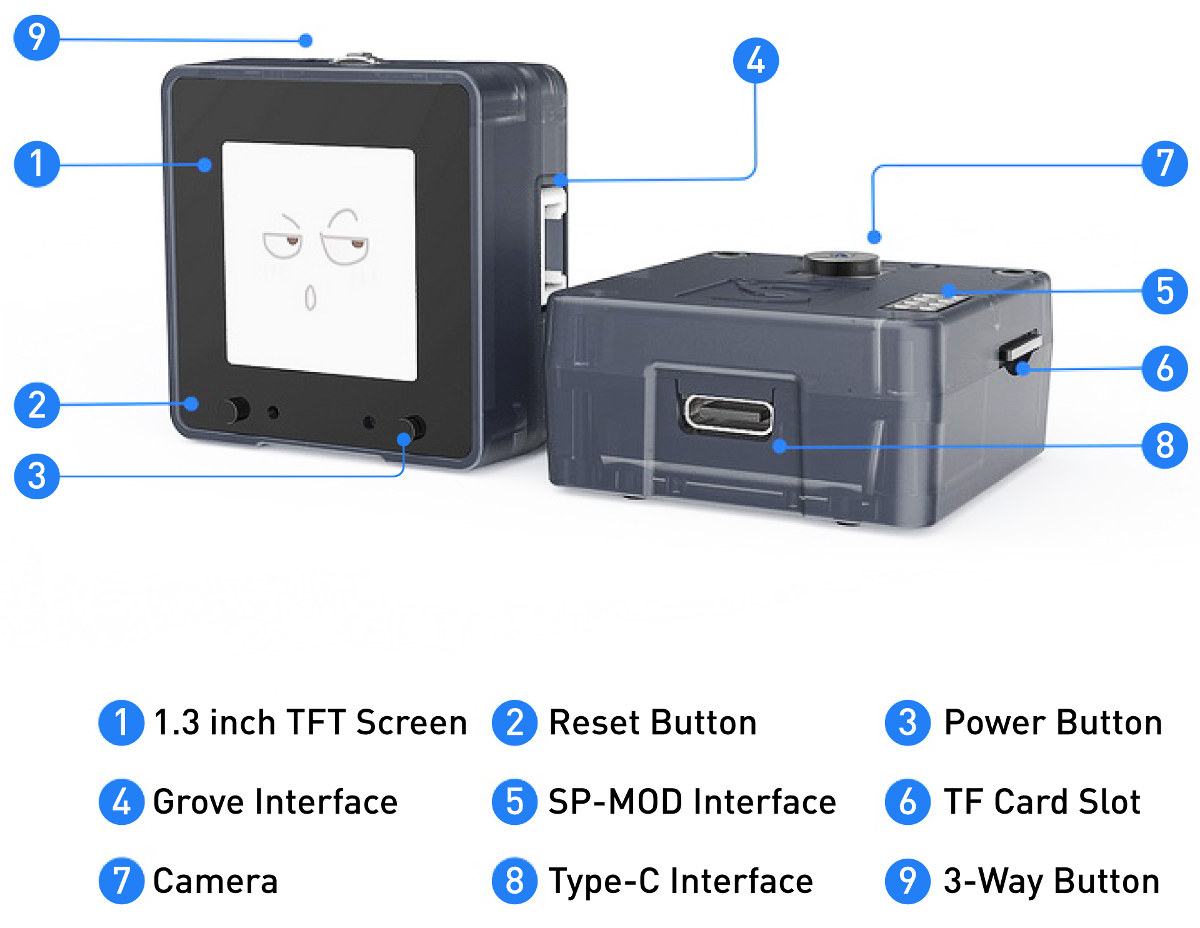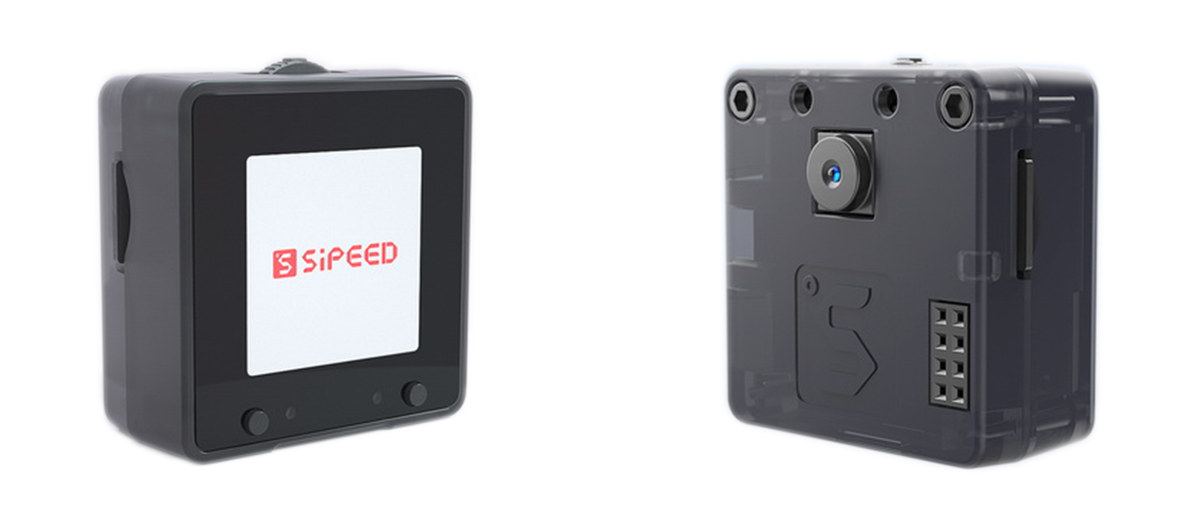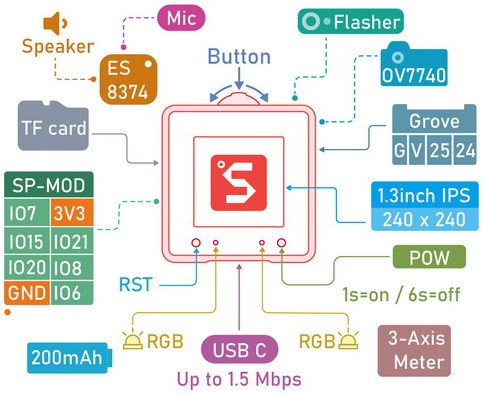Sipeed has made several boards and kits based on Kendryte K210 RISC-V processor for low-power AI workloads such as face detection or object recognition including Maixduino board and Grove AI HAT that ship with camera and display.
The company has now come up with MaixCube all-in-one development platform that houses Sipeed M1 module, a display, a camera, and a battery into a plastic case that’s somewhat similar to MStack M5StickV but with a larger display, and variations in the form factor and features.
Sipeed MaixCube specifications:
- SoC – Kendryte K210 dual-core 64-bit RISC-V processor @ 400 MHz (overclockable to 600 MHz) with FPU, 8MB SRAM, KPU AI accelerator, APU audio processor, and FFT accelerator
- Storage – 128 Mbit flash, MicroSD card slot
- Display – 1.3″ TFT screen with 240×240 resolution
- Camera – OV7740 sensor (VGA camera)
- Audio – Built-in microphone, external speakers support; ES8374 audio codec
- USB – 1x USB type-C interface
- Sensors – Accelerometer
- Expansion – 4-pin Grove interface, 8-pin SP-MOD interface
- Misc – Reset and power button, 3-way button, 2x RGB LED
- Battery – 200 mAh internal lithium battery
- Power supply – 5V via USB-Type-C port
- Dimensions – 40 x 40 x 16 mm

Just like other K210 platforms, MaixCube runs FreeRTOS or Linux although the latter is probably less useful since AFAIK AI accelerators have not been implemented in Linux. Development can be done with C/C++ (Arduino) or MicroPython in respectively PlatformIO/Arduino IDE or MaixPy IDE as we explain in our Sipeed M1 getting started guide.
Typical applications for the development kit include face detection, object recognition, FFT spectrum analysis, and game simulation. The system can perform image recording at 60 fps using QVGA resolution or 30 fps with VGA using YOLOv3, TinyYOLOv2, or face recognition demos and TensorFlow, Keras, Darknet or Caffe deep learning frameworks.
I had never heard about SP-MOD (SiPeed MODule) connector or modules previously. The 8-pin header features 6 GPIO as well as 3.3V and GND signal, and 14 different modules will soon be offers with a microphone array, multi SP-MOD adapter, PSRAM, Bluetooth, LoRa, E-Ink display and more…
Sipeed MaixCube is up for pre-order for $24.90 on Seeed Studio with shipping scheduled to start on May 8th.

Jean-Luc started CNX Software in 2010 as a part-time endeavor, before quitting his job as a software engineering manager, and starting to write daily news, and reviews full time later in 2011.
Support CNX Software! Donate via cryptocurrencies, become a Patron on Patreon, or purchase goods on Amazon or Aliexpress






